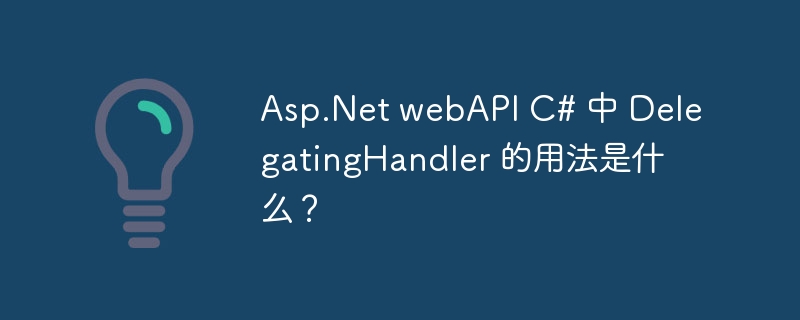

In a message handler, a series of message handlers are chained together. The first handler receives the HTTP request, does some processing, and then hands the request to the next handler. At some point, a response is created and returned to the chain. This pattern is called Delegated Handler.
In addition to the built-in server-side message handlers, we can also create our own server-side HTTP message handlers. Create custom server-side HTTP For message handlers in ASP.NET Web API, we use DelegatingHandler. We have to create a class derived from System.Net.Http.DelegatingHandler. The custom class should then override the SendAsync method.
Task
This method takes HttpRequestMessage as input and returns asynchronously HttpResponseMessage. A typical implementation performs the following operations:
public class CustomMessageHandler : DelegatingHandler{
protected async override Task<HttpResponseMessage> SendAsync(
HttpRequestMessage request, CancellationToken cancellationToken){
Debug.WriteLine("CustomMessageHandler processing the request");
// Calling the inner handler
var response = await base.SendAsync(request, cancellationToken);
Debug.WriteLine("CustomMessageHandler processing the response");
return response;
}
}Delegate handlers can also skip the inner handler and create the response directly.
public class CustomMessageHandler: DelegatingHandler{
protected override Task<HttpResponseMessage> SendAsync(
HttpRequestMessage request, CancellationToken cancellationToken){
// Create the response
var response = new HttpResponseMessage(HttpStatusCode.OK){
Content = new StringContent("Skipping the inner handler")
};
// TaskCompletionSource creates a task that does not contain a delegate
var taskCompletion = new TaskCompletionSource<HttpResponseMessage>();
taskCompletion.SetResult(response);
return taskCompletion.Task;
}
}The above is the detailed content of What is the usage of DelegatingHandler in Asp.Net webAPI C#?. For more information, please follow other related articles on the PHP Chinese website!




